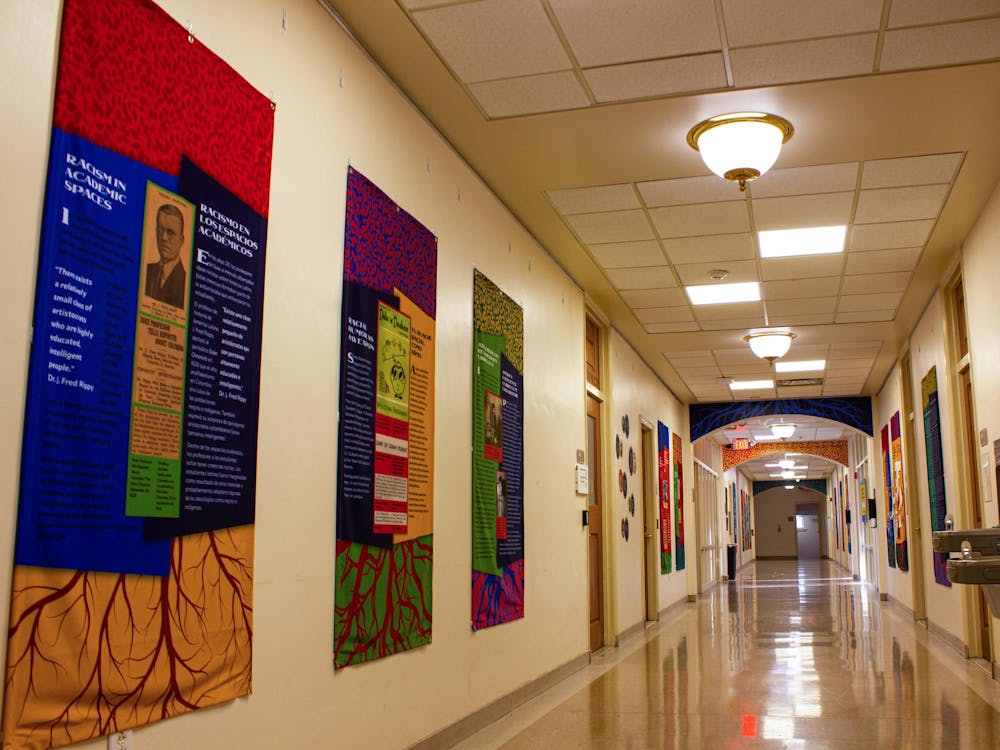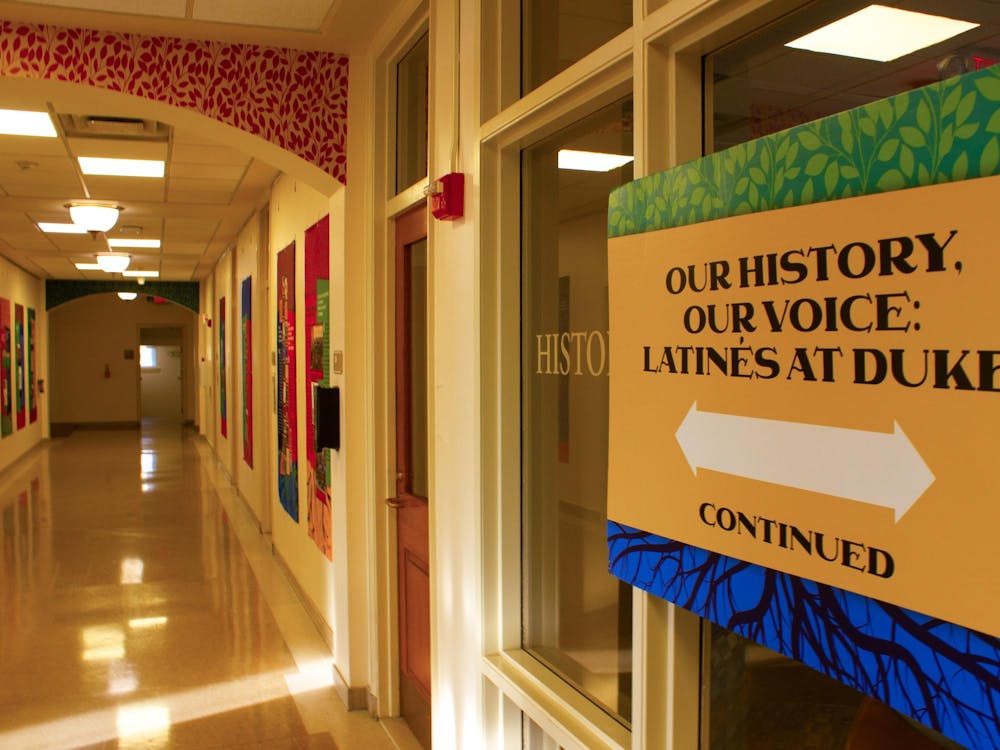Duke unveiled the “Our History, Our Voice: Latiné at Duke” exhibit mid-January, exploring the history of the Latinx community at Duke as part of the University’s centennial celebrations.
The exhibit showcases various aspects of Latinx life throughout Duke’s history, including challenges the community has faced, triumphs they have achieved and the ongoing quest for inclusion and equity. It will be open to the community until December 2025 in the Franklin Gallery, located on the second floor of the Classroom Building on East Campus. Some components are also available online.
Students in the fall 2023 course “Latinx Social Movements” helped curate the exhibit under the guidance of Cecilia Márquez, Hunt Family assistant professor of history, alongside students from the spring 2021 “Spanish for Heritage Learners” course taught by Joan Munné, senior lecturer of romance studies.
Márquez's students focused on the original exhibit's historical content and were divided into cohorts that expanded on the seven panels created by students in Munné's course, who conducted the oral histories of the exhibit.
"Latino history is Duke history. We can't tell Duke's history without including the voices and histories of Latinos,” Márquez said. “... The exhibit tries to show that the experience of Latinos is not singular and the question of race is really at the heart of it too.”
The panels explore different aspects of the experiences of Latinx students, faculty and staff throughout Duke’s history. Topics include “The Term Latiné,” “Duke Before and After Segregation,” “Racism and Under-representation,” “Latiné Student Initiatives,” “Confronting Systematic Oppression at Duke” and “Latin America in Duke’s Curriculum.”

The first edition of the exhibit was showcased in the Perkins Library in 2022. The exhibit explored nine thematic cases.
According to Munné, the goal of these exhibits is to represent Latinx voices and histories. He hopes that the exhibits showcase that Latines have “a history that is part of the U.S.” that cannot be denied and that they are “here to stay.”
For Márquez, the exhibit allows students to see themselves in Duke’s past and understand that history is not disconnected from their day-to-day experiences. She believes it is important to “not [be] thinking of Duke's history as something that happened long, long ago, but something that's actively being created in the moment that we're in.”
“I want to express so much gratitude towards Duke alumni who have persevered and worked hard to ensure that they're being able to build a house that they definitely did not live in, but I'm having the privilege of living in right now,” said junior Yadira Paz-Martinez, a student who took the “Latinx Social Movements” course.
Sophomore Cecelia Wasco investigated the history of Latinx demands on campus in Márquez’s class but wishes the exhibit was more visible.
For Paz-Martinez, the location means first-years are exposed to Latinx history.
“If you nourish those kinds of conversations as a first-year, then you start thinking about those things subconsciously as you go throughout your four years at Duke,” Paz-Martinez said.
Márquez hopes the exhibit encourages all students to “think critically about how they are capturing their own time here at Duke.” If they save photos, documents and efforts from their student groups, Duke students in one hundred years will be able to recognize student advocacy no matter how small, she said.
Get The Chronicle straight to your inbox
Signup for our weekly newsletter. Cancel at any time.

